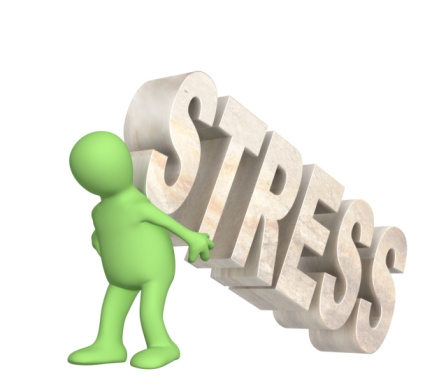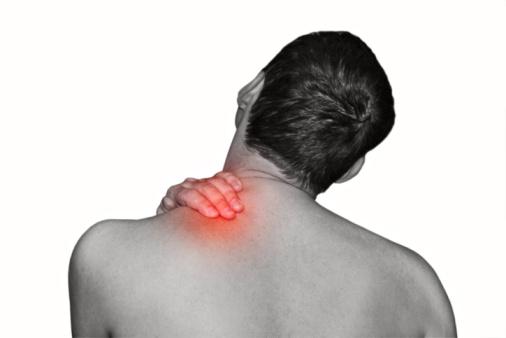Anger, Stress and Anxiety Management Tips for Satisfying Relationships
Chronic pain is the most common debilitating experience for a quarter of all American’s under 60 years of age, and costs $635 billion a year to health care services. Opioids caused 18,893 overdose deaths in the United States in 2014, according to the American Society of Addiction Medicine. Andrew Ahn, chief scientific officer of pain research at Lilly, said opioids are effective against acute pain, but have limited and decreasing effectiveness against chronic pain. Recently, in May 2016 in JAMA Internal Medicine reported that opiods perform in a subpar manner for chronic low back pain. .An article in the Journal of Neuroscience, 2105, reports that strong opiates like morphine offer little relief because they don’t release the rewarding dopamine neurotransmitters that would ease chronic pain. The Journal Anesthesia & Analgesia, 2007 indicates that pain disrupts the process whereby you consolidate your learning into long-term memory storage. So when you can’t form a memory of a good feeling or experience during relaxation, meditation, yoga or other non-invasive practices, your chronic pain quite literally, drives you to distraction.
In many cases there is no organic source for chronic pain – MRI and CAT scans reveal no particular abnormality or malfunction that could be medically corrected. Alternative medicine such as acupuncture can help for some types of pain, but chronic emotional stress renders the benefits moot. Exercise, Tai chi, and meditation involve life style changes that many with chronic pain are not inclined to invest in while suffering.
But, there is enormous hope and relief available to you at little cost as a large body of research shows that intense negative emotions unexpressed are held in the body and are usually at the root of chronic pain.
It starts from early childhood when your care givers fail to tune into your feelings and soothe you while helping you feel safe. Perhaps you were shut down if you tried to express your anger, fear, distress or need for comfort. If so, you will have learned that it’s not safe to let your feelings out. So you stuffed them in the body trying to be strong. You may have little or no conscious memory of being hurt in this way, because early childhood memories are stored in the body. Furthermore if you grew up in an environment where no one talked of feelings, you never developed a vocabulary of emotional expression, and continued stuffing the bad feelings in your body.

Chronic Pain in Adulthood Often Stems From Childhood Adversitites
Children from high conflict homes, by training their brains to be vigilant, process signs of interpersonal emotion, either anger or happiness, differently than children from low conflict homes, (Journal of Family Psychology, 2015) and are more likely to feel stressful emotions in their body since they learned it was the safe thing to do.
You have been doing a valiant job trying to survive by holding in your stress, fear, hurt and desperate need for comfort and security. You’ve been so brave not showing how neglected, rejected and undervalued you felt by those who you were supposed to rely on. But in order to be the good soldier, you had to stuff those unbearable feelings somewhere, and the easiest place to do so was your body. After all, fear and anxiety is a physical experience – that pit in your stomach, and the racing heart, with tension in the muscles. You freeze and that fear is stored as a memory in your body because you daren’t show or tell for fear of being ridiculed or ignored. Over time, it’s become overwhelming and screaming out to you in pain, begging you to own those awful feelings, look at them, touch and feel them, understand them, digest them and free yourself forever.
For example the way in which you were attended to as an infant when you were uncomfortable and needing soothing, has a huge influence on the severity of chronic pain in adulthood. If you were left hanging as a kid, and never knew when or if you were going to be taken care of when you were then your focus was on getting the care, or trying to handle the fear of being ignored. These two styles of attachment, known as the ‘preoccupied’ and ‘fearful’ styles of attachment are associated with heightened pain severity, and pain catastrophizing’ according to a report by the American Pain Society in 2009.
Another study reported in Cognitive and Affective Neuroscience, 2015 found that greater levels of cumulative stress during childhood and adolescence predicted lower reward-related activity in the ventral striatum of the brain in adulthood. Lower rewards in this part of the brain means that pain becomes more prominent and persistent.
Childhood stress and psychological abuse and neglect has been shown to increase inflammatory markers in the blood stream that continues into adulthood. Inflammation caused by stress leads to chronic pain and becomes a major health issue, (Molecular Psychiatry, 2015). Women who have been severely mistreated and abused emotionally and or physically end up with chronic pain through heightened cortisol levels that reflect permanently altered stress hormones.
Chronic pain can be viewed as a learned memory, reported The 9th Annual Canadian Neuroscience Meeting, 2015 Just like in the way that repetition of a piano piece enables you to learn it by facilitating transmission of the appropriate signals through your neurons, pain that persists can become chronic because your neurons become more efficient at transmitting pain signals. This strengthening of connections between neurons through repeated use is called Long Term Potentiation, because you have kept those emotions stuffed, and then add repeated layers of uncomfortable feelings. So the pain gets stronger and they feed off each other.
Chronic Pain is Reduced By Expressing Anger and Sadness Bottled Up For a Long Time
Let’s take the case of 35-year old Matthew who suffered chronic right hip pain with excruciating sciatica all down his right leg. He was irritable anticipating the pain as he woke and got out of bed, having to brace himself against the pain as he stood up. The persistent chronic pain affected his mobility, sapped his energy and made him want to give up on life. Imaging scans revealed no abnormalities or bone loss. Strong medication made him nauseous, physical therapy increased the pain; and massage was only temporarily soothing. Matthew was constantly tense and ‘armored up’ ready for the pain, wishing he could control it. He tried comfort food and alcohol but it was a fleeting sense of taking action that made him feel good. The pain remained, like a dark shadow he couldn’t shake and had to succumb to.
While in therapy to deal with marital conflict, Mathew noticed that when he felt understood and accepted, his pain went away. He discovered that when he went camping or sailing, and when he played with his kids, he was pain free. But he wasn’t aware of it at the time: it was only when he reflected on his experience of comfort versus discomfort that he made this connection. As he got more connected with his emotions Matthew realized the rage inside him about having to play a parental role in his marriage, just as he had parented his mother during his childhood when she ‘lost it,’ and frequently panicked. As we explored his earliest experiences with information from his grandmother and mother, we learned that his mother was sick after giving birth, , and his care became somewhat haphazard. Matthew as you can imagine wasn’t secure and couldn’t rely on care givers to meet his needs. Fear for his survival and later anger at his mother for not being emotionally strong – all went into his body, and it was only when he was safe and received consistent care in therapy could he reconnect with these awful feelings. When he did feel them in session the pain lessened, once we started putting words to them.
He began to notice that the pain got worse when he anticipated his wife demanding that he behave a certain way, and haranguing him when he didn’t live up to her expectations. It was the same when he knew he had to spend time with his mother and brother who derided him for not molding himself to their ideal. But he never told them how he felt. He never shared how angry he was at being controlled, nor how he feared that his autonomy and individuality was being crushed. He tried to be ‘above’ it, as if nothing touched him – except that it did, on a continual basis, resulting in severe and chronic pain in his body. The journal Emotion , 2007 published a study that showed that attempts to suppress anger may amplify pain sensitivity by ironically augmenting perception of the irritating and frustrating qualities of pain. Matthew was keeping his pain bottled in and feeling more pain as a result.
Chronic Pain Management Success – Research Shows Emotional Expression Relieves Pain
It took a long time for Matthew to feel safe enough to express his anger and terror of being squashed in session with me. But when he did, he felt seen, heard and acknowledged. He was validated and the pain vanished until the next time he ignored his feelings and let his body scream out his emotional pain.
The Annals of Behavioral Medicine, 2013, published a study that anger awareness and expression training was effective in helping with headaches, and it’s likely that Matthew whose therapy was facilitating anger awareness, will also be helped to deal with his hip and sciatic nerve pain.
Chronic Abdominal and Musceloskelatal Pain Releieved By Expressing Long Suppressed Emotions
At the age of 40 Sara had been suffering from a range of chronic pains including stomach cramp, ankle pain, ear ache, neck and shoulder pain as well as back pain. These chronic conditions that flared up from time to time and caused enormous exhaustion trying to manage them, since neither homeopathic nor traditional medicine appeared to offer relief or an understanding of the source of the pain. There were no organic abnormalities and other than binge eating when she needed to comfort herself, health wise Sara was doing okay. She went through life pretending to be interested or present with family and others. But inside she was always on guard. Would they see and acknowledge her or would she just be on the periphery of their lives, just as she had experienced as a child? Wanting comfortable connection but fearing being ignored or chided, it was easier to just become part of the scenery as if she didn’t exist. The only problem was that she suffered a deep and insatiable longing for connection from a receptive caring person that she could trust. That longing became stuffed because it would be weak to show it. The longing and pain of not having that connection and nurturance was reflected in her ankle pain when she didn’t want to go to work, and wished to be put to bed and cared for. As soon as she and I worked on exposing the feelings of needing reassurance and being important enough to be cared for, the ankle pain abated.
Stomach cramps plagued Sara often. They seemed to come from nowhere and despite Sara’s desperate efforts to relate it to her menstrual cycle; we noticed that the cramps came at random. She did not have any disease such as Irritible Bowel Syndrome or Inflammatory Bowel Disease, although those who do often experience non-organic pain. The Journal of Gastroenterology, 2011 reports that a tendency to experience the world in negative ways (neuroticism) tends to be higher in patients with irritable bowel syndrome (IBS), and is a risk factor for chronic, unexplained pain in IBS.
After I drew out Sara’s anger at her father for not protecting her as a youngster, and her current feelings of being unsafe in her apartment, it was as if the cramps were massaged away after she expressed the suppressed emotions. Other times our discussions would reveal that her abdominal pain was a sign of the stuffed terror of being forgotten by her parents, leaving her alone in a big storm. I encouraged her to put her terror into words and speak the fear to her parents as if they were there with her. The dry nauseous sobs coming from the pit of her belly released her from her pain – until the next time she felt her alone and abandoned. She let out her fear, rage and anxiety about being unloved – otherwise why would they have abandoned her. Then we worked on her abandonment fears, helping her express them, and receive the security she craved from my consistent presence and nurturing in a reliable way.
As Sara became more aware of all her stuffed emotions, and therapy made it safe for her to feel them, she released the pain from her body, owning the emotions and letting out the years of unresolved relationship stress. At first Sara found it easiest to access and express her intense emotions through various artistic activities and then talking with me about them. We also used her vivid dreams to help access her unbearable and overwhelming emotions that had been stuffed for her whole life. Getting her to write journal letters to her mother, grandmother and father about all the times she felt rejected and unimportant helped her to keep up the emotional expression in between therapy sessions.
In 2016 the American Pain Society at their 35th Annual Scientific Meeting presented a study that showed that patients with Fibromyalgia did best when offered Emotional Awareness and Expression Therapy, as I did with Sara. These patients did least well with Cognitive Behavioral therapy that is more intellectual and doesn’t release the feelings buried in the body, giving pain.
The two examples I have described represent many of the patients I see with similar chronic pain issues. They all have concurrent mental health issues such as anxiety, depression, eating disorders and chronic pain disorders. An article in the Journal of Pain 2015 reports that one quarter of young people have co-existing emotional disorders and chronic pain, showing the intimate connection between them. The onset of pain was frequently preceded by mental disorders. For example, affective disorders such as depression occurred particularly frequently before headaches. Furthermore, anxiety disorders often occurred before neck and back pain, as well as before headaches.
With so much evidence pointing to early mistreatment and neglect causing stress, with suppression of emotions leading to chronic pain in adulthood, it’s important to take your feelings seriously in terms of releasing yourself from the pain that plagues you. We now also have a good deal of evidence that therapies involving emotional expression especially anger and sadness work! Chronic pain is reduced and that reduction is maintained as you feel safe to continue expressing feelings as they arise.
Copyright, Jeanette Raymond, Ph.D.
You may also like
Shameful anger is detoxified by the pain of a bone fracture
Expressing Anger Appropriately is a Natural Pain Relief Mechanism
Is Fear of Standing up for Yourself Causing you Allergies?
Disclaimer: this article is for educational and informational purposes only. There is no liability on the part of Dr. Raymond for any reactions you may have when reading the material or following the suggestions therein. Interacting with this material does not constitute a therapeutic relationship with Dr. Raymond.



